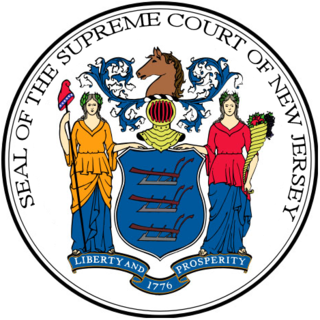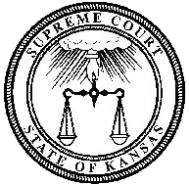History
At the adoption of the Oklahoma Constitution in 1907, the Governors had the power to appoint, with Senate approval, anyone they wanted to any position within the judicial system that required gubernatorial appointment. This power extended to District Judges, Judges of the Oklahoma Court of Criminal Appeals, as well Justices of the Oklahoma Supreme Court. However, during the 1960s, a growing desire to restrain the Governor's executive power allowed for the adoption of a new method of selecting the judges and justices of the state's highest courts.
On July 11, 1967, the Oklahoma Constitution was amended by State Question 447. 447 added Article 7B to the Constitution and created the Judicial Nominating Commission, originally consisting of 13 members. State Question 752 (adopted by the voters on November 2, 2010) amended the article by adding two additional members.
Powers
The new method mandated by Article 7B states that in the event of a vacancy, for whatever reason, within the Oklahoma Supreme Court, the Oklahoma Court of Criminal Appeals, or the Oklahoma Court of Civil Appeals, the Commission screens a list of applicants that desire that job. Next, the Commission selected three qualified nominees and presents the names to the Governor. The Governor may then appoint one of the nominees to position with further approval not necessary. If the Governor fails to appoint a nominee to the position within sixty days, the Chief Justice of Oklahoma may make the selection.
The Commission's power only extends to Oklahoma's appellate courts. It can not influence the other judicial candidates. However, should there be an unexpected vacancy within the District Courts, the Commission may provide the same service as it does for the higher courts.
The majority of Commission is "sufficient to decide any question", unless otherwise specified by the Constitution. The Commission has jurisdiction to determine whether the qualifications of nominees to hold a judicial position have been met and to determine the existence of vacancies on the Commission.
Membership
The commission currently consists of 13 members: six appointed by the governor, six selected by the Oklahoma Bar Association, and the thirteenth selected at large by the other twelve. Of the six gubernatorial appointees, each one must come from a different Congressional District (as those districts existed in Oklahoma in 1967) and none are allowed to be a licensed attorney in Oklahoma. The 13th member is selected by an eight-member majority, must not be a licensed attorney in Oklahoma or any state, but must be a resident of Oklahoma. In the event that the commission can not reach a majority within thirty days, the governor may select the at-large member.
State Question 752 amended the Commission by adding two more at-large members. One member will be appointed by the Speaker of the Oklahoma House of Representatives while the other will be appointed by the President Pro Tempore of the Oklahoma Senate. The members may come from anywhere in Oklahoma and cannot be licensed attorneys.
Each member serves a staggered six-year term. No person is eligible to immediately succeed themselves.
Chairmanship
The Chairman of the Commission is selected by its own members to serve for a one-year term.
Restrictions
Of the members selected by the governor, no more than three may belong to the same political party. All commissioners serve without pay, but are compensated for travel expenses. No commissioner, while a member of the commission, is allowed to hold any other public office by election or appointment. They may not serve as any official within a political party and are not eligible for nomination to a judicial position by the Commission. This restriction applies as long as the commissioner is a part of the commission and for five years after their term is over.
In the United States, a state supreme court is the highest court in the state judiciary of a U.S. state. On matters of state law, the judgment of a state supreme court is considered final and binding in both state and federal courts.

The governor of Oklahoma is the head of government of the U.S. state of Oklahoma. Under the Oklahoma Constitution, the governor serves as the head of the Oklahoma executive branch, of the government of Oklahoma. The governor is the ex officio commander-in-chief of the Oklahoma National Guard when not called into federal use. Despite being an executive branch official, the governor also holds legislative and judicial powers. The governor's responsibilities include making yearly "State of the State" addresses to the Oklahoma Legislature, submitting the annual state budget, ensuring that state laws are enforced, and that the peace is preserved. The governor's term is four years in length.
The Missouri Plan is a method for the selection of judges. It originated in Missouri in 1940 and has been adopted by many states of the United States. Similar methods are used in some other countries.

The Supreme Court of New Jersey is the highest court in the U.S. state of New Jersey. In its current form, the Supreme Court of New Jersey is the final judicial authority on all cases in the state court system, including cases challenging the validity of state laws under the state constitution. It has the sole authority to prescribe and amend court rules and regulate the practice of law, and it is the arbiter and overseer of the decennial legislative redistricting. One of its former members, William J. Brennan Jr., became an associate justice of the Supreme Court of the United States.

The Indiana Supreme Court, established by Article 7 of the Indiana Constitution, is the highest judicial authority in the state of Indiana. Located in Indianapolis, the Court's chambers are in the north wing of the Indiana Statehouse.
The Florida Judicial Nominating Commissions are 26 separately constituted bodies responsible for providing the governor of Florida with a list of possible appointments to the various state courts. These commissions are required under Article V of the Florida Constitution.

The Supreme Court of Oklahoma is a court of appeal for non-criminal cases, one of the two highest judicial bodies in the U.S. state of Oklahoma, and leads the judiciary of Oklahoma, the judicial branch of the government of Oklahoma.

The Nebraska Supreme Court is the highest court in the U.S. state of Nebraska. The court consists of a chief justice and six associate justices. Each justice is initially appointed by the governor of Nebraska; using the Missouri Plan, each justice is then subject to a retention vote for additional six-year terms. The six associate justices each represent a Supreme Court district; the chief justice is appointed at-large.
The Tennessee Plan is a system used to appoint and elect appellate court judges in Tennessee. It is largely patterned after the Missouri Plan, and an earlier version in Tennessee was called the Modified Missouri Plan. At the end of every judge's eight-year term following a judicial appointment to the highest courts, retention elections are held, which have the option of whether each judge shall be retained through a yes-no option. This system applies to the Tennessee Supreme Court, the Tennessee Court of Appeals, and the Tennessee Court of Criminal Appeals.

The Secretary of State of the State of Oklahoma is the chief clerical officer of Oklahoma and a member of the Oklahoma Governor's Cabinet. The Secretary of State is the only appointed constitutional member of the executive branch of the Oklahoma state government. The office of Secretary of State was elective from statehood until 1975 when the Constitution was amended and it became an appointive office, running concurrent with the Governor effective in 1979.

The Oklahoma Court on the Judiciary is one of the two independent courts in the Oklahoma judiciary and has exclusive jurisdiction in adjudicating discipline and hearing cases involving the removal of a judge from office, excluding the Oklahoma Supreme Court, exercising judicial power under the Oklahoma Constitution.

The government of the U.S. State of Oklahoma, established by the Oklahoma Constitution, is a republican democracy modeled after the federal government of the United States. The state government has three branches: the executive, legislative, and judicial. Through a system of separation of powers or "checks and balances," each of these branches has some authority to act on its own, some authority to regulate the other two branches, and has some of its own authority, in turn, regulated by the other branches.

The Oklahoma Court System is the judicial system for the U.S. State of Oklahoma. Based in Oklahoma City, the court system is a unified state court system that functions under the Chief Justice of Oklahoma who is its administrator-in-chief.

The Kansas Supreme Court is the highest judicial authority in the U.S. state of Kansas. Composed of seven justices, led by Chief Justice Marla Luckert, the court supervises the legal profession, administers the judicial branch, and serves as the state court of last resort in the appeals process.

The Oklahoma Court of Criminal Appeals is one of the two highest judicial bodies in the U.S. state of Oklahoma and is part of the Oklahoma Court System, the judicial branch of the Oklahoma state government.

The Oklahoma Court of Civil Appeals is an intermediate appellate court in the state of Oklahoma. Cases are assigned to it by the Oklahoma Supreme Court, the state's highest court for civil matters.

The government of the U.S. state of Kansas, established by the Kansas Constitution, is a republican democracy modeled after the Federal Government of the United States. The state government has three branches: the executive, the legislative, and the judicial. Through a system of separation of powers, or "checks and balances," each of these branches has some authority to act on its own, and also some authority to regulate the other two branches, so that all three branches can limit and balance the others' authority.
The Emergency Interim Executive and Judicial Succession Act is an Oklahoma state law governing emergency succession to the all offices of the state and local governments, excluding the members of the Oklahoma Legislature, which are governed by the Oklahoma Emergency Management Interim Legislative Succession Act.

Noma D. Gurich is an American attorney and jurist who is serving as an associate justice of the Oklahoma Supreme Court. Gurich was appointed the State's highest court by Governor Brad Henry in 2010 and assumed office on February 15, 2011. Gurich was appointed to the Court following the death of long-time Justice Marian P. Opala. Gurich is the third woman in state history after Alma Wilson and Yvonne Kauger to be appointed to the Supreme Court.
The Judiciary of California or the Judicial Branch of California is defined under the California Constitution as holding the judicial power of the state of California which is vested in the Supreme Court, the Courts of Appeal and the Superior Courts. The judiciary has a hierarchical structure with the California Supreme Court at the top, California Courts of Appeal as the primary appellate courts, and the California Superior Courts as the primary trial courts.









